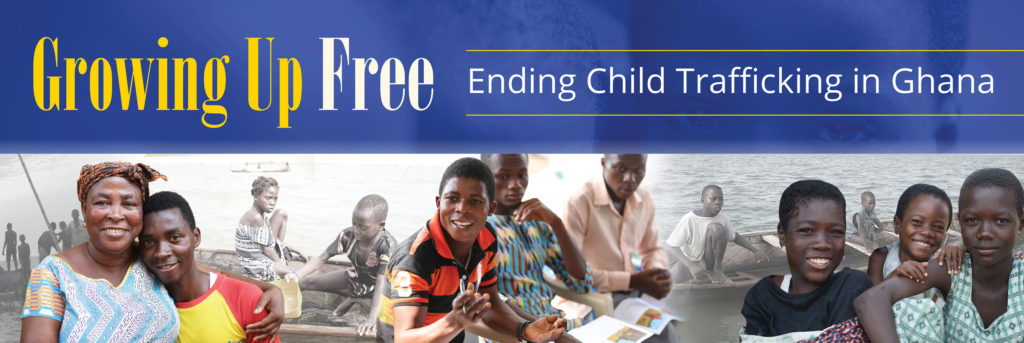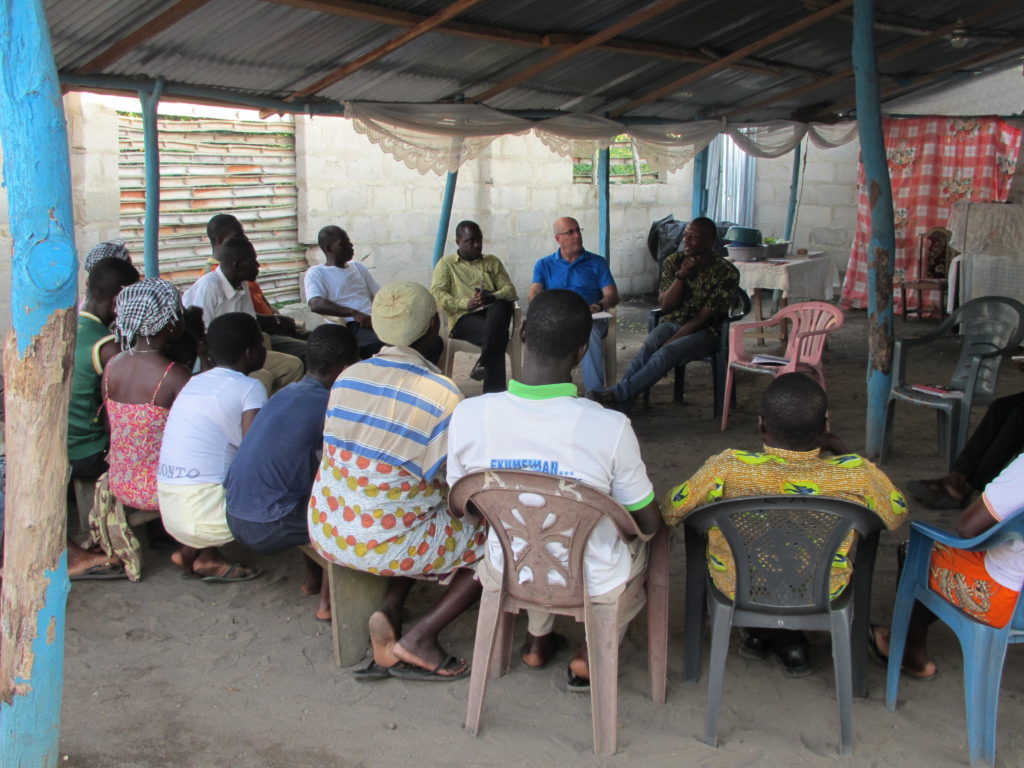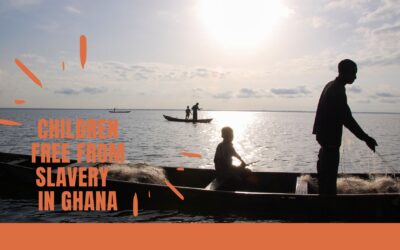By William Greenbaum and Maurice Middleberg
Sylvester and Emmanuel were side-by-side as members of the Community Child Protection Committee (CCPC), sitting on plastic chairs and gathered under a tarp to ward off the sun. The CCPC had assembled to talk about efforts to eradicate child trafficking from Hweda, a modest farming and fishing village. Committee members receive no compensation for their work and volunteer their time, though they are typically no better off than other villagers.
We asked: “Why do this? This takes up a lot of time and energy that you could be using in other ways.”
“I was a trafficked child.” Sylvester told us. “When I finally returned, no one would believe my experience. Now, thanks to our work, people understand and are acting.”
Emmanuel said: “I was a trafficker. The easiest cases were buying children who had lost a parent. I really didn’t know it was illegal and didn’t think about it being wrong.”
Now these two men – one who had been trafficked and the other a repentant trafficker – have joined together to end child trafficking in their community.
There is a long history of children being sent from Hweda and communities like it to work in the fishing industry on and around Lake Volta. The boys, typically 8-15 years old, work on dangerous, unstable pirogues to haul in heavy loads of tilapia and perch, while the girls are used to clean and market the fish.
Free the Slaves and our front-line partner, International Needs Ghana, had encouraged formation of the CCPC under the auspices of the U.S. State Department-funded Child Protection Compact Partnership. The compact, which was launched in 2015, is an accord between the Ghanaian and U.S. governments designed to dramatically reduce child slavery in the fishing sector. The collaboration between Free the Slaves and International Needs, the Growing Up Free Program, is targeting 34 highly vulnerable communities with goals of prevention, rescuing and caring for trafficked children, and reducing the vulnerability of their families that underlies child slavery. So far, 20 communities have been reached.

As our visitation group moved from village to village, we heard many tales of child enslavement. The girl with a blind mother and deceased father who was entrusted to someone who later trafficked her. The boy who was sent to live with an uncle so he could attend school only to be trafficked. The girl from an impoverished home who was sent to live with a family that promised schooling, only to turn the child into a domestic servant.
The Hweda CCPC is typical of those established in the targeted communities. Members receive training and coaching so they can lead their communities in action against trafficking. The CCPCs form learning groups of community members who become educated about child slavery, child rights and child protection. Awareness-raising events linked to market days and festivals have been organized. CCPC members go house-to-house to educate parents, identify at-risk children and uncover cases of child trafficking.

The CCPCs meet with religious, traditional and other community leaders to enlist their support. They also visit schools to educate children and teachers. Community exercises are held to dramatize the importance of vigilance; for example, child protection circles put children in the middle of a circle of adults, with the message, “All the children in the community need our care. Look out for each other’s children.”

The most important outcome of these activities has been to spur new, protective norms and encourage parents, working with Free the Slaves and International Needs, to track down and retrieve their children. Children who are rescued are placed in a network of shelters, where they can be safe, receive health care and counseling, catch up on missed schooling and transition back to a life of freedom. After an adjustment period in the shelter, the children are returned to their homes and families. After the return to, the children are monitored for a period of time, which also helps the families cope with the reintegration process.
We had the opportunity to visit the Hovde House shelter maintained by Challenging Heights, where the children are treated with great care and sensitivity. Children are assessed using a Post-Traumatic Stress Disorder checklist. They receive various forms of therapy, including art therapy and narrative therapy. The Children’s Circle is a safe space where they can discuss any topic they choose. A Children’s Council gives them the space and authority to learn decision-making, a privilege previously denied to them. The children, who have lived with violence, are taught new ways to handle anger; a sign in the school reads, “My hands are not for hitting.” Children are assessed as to their readiness for reintegration into their home families and communities.
The mobilization of communities is paying off. Over the course of two days, we visited five villages in the Central Region of Ghana. As we went from village to village, the consistent message we heard was that community education and mobilizing were changing attitudes and behaviors, leading to reductions in child trafficking. So far, more than 60 children have been retrieved; they are in shelters or have been returned to their families.

Our visit to Ghana was enormously encouraging. We saw firsthand that educated and mobilized communities can become a bulwark against child slavery. We left cheered and optimistic that, with time, 34 communities will become protected spaces where children can live safely and grow up free.
Editor’s Note: William Greenbaum is a member of the Free the Slaves board of directors. Maurice Middleberg is the Free the Slaves executive director. Stills in this blog post were photographed by William Greenbaum. Learn more about our Ghana program, including videos of a child slave rescue, here.

